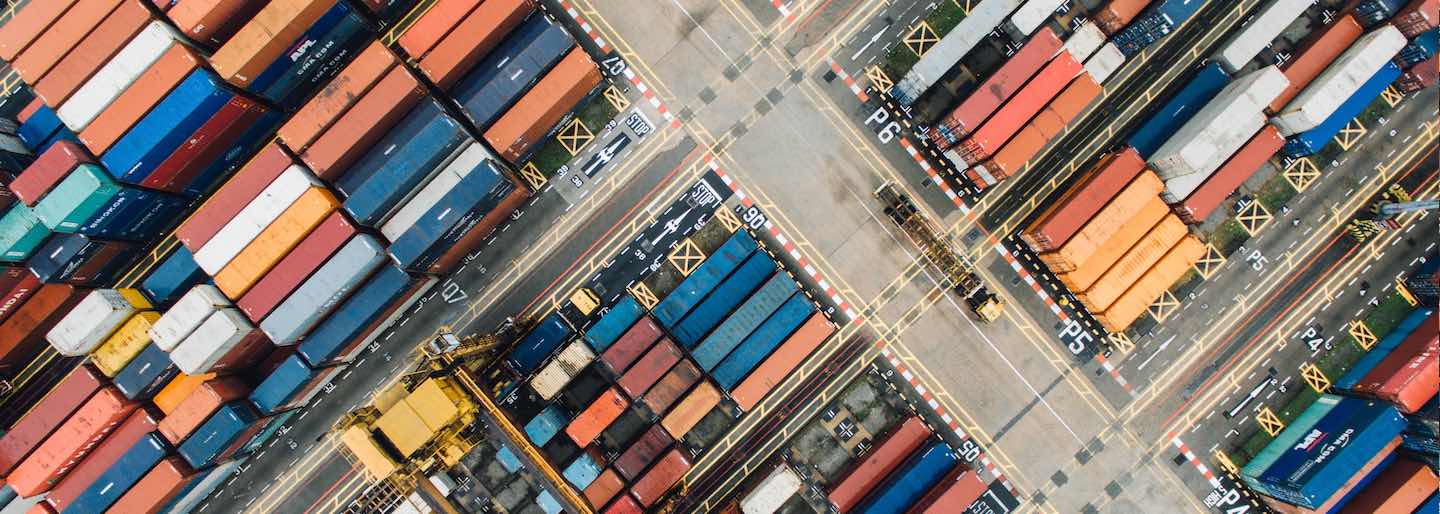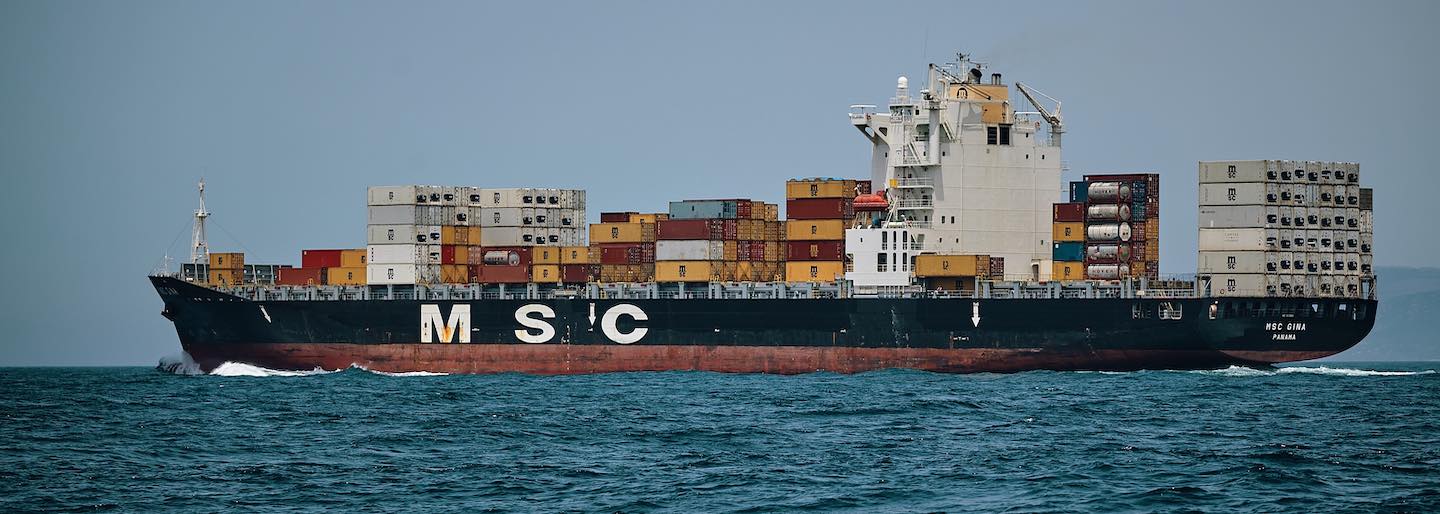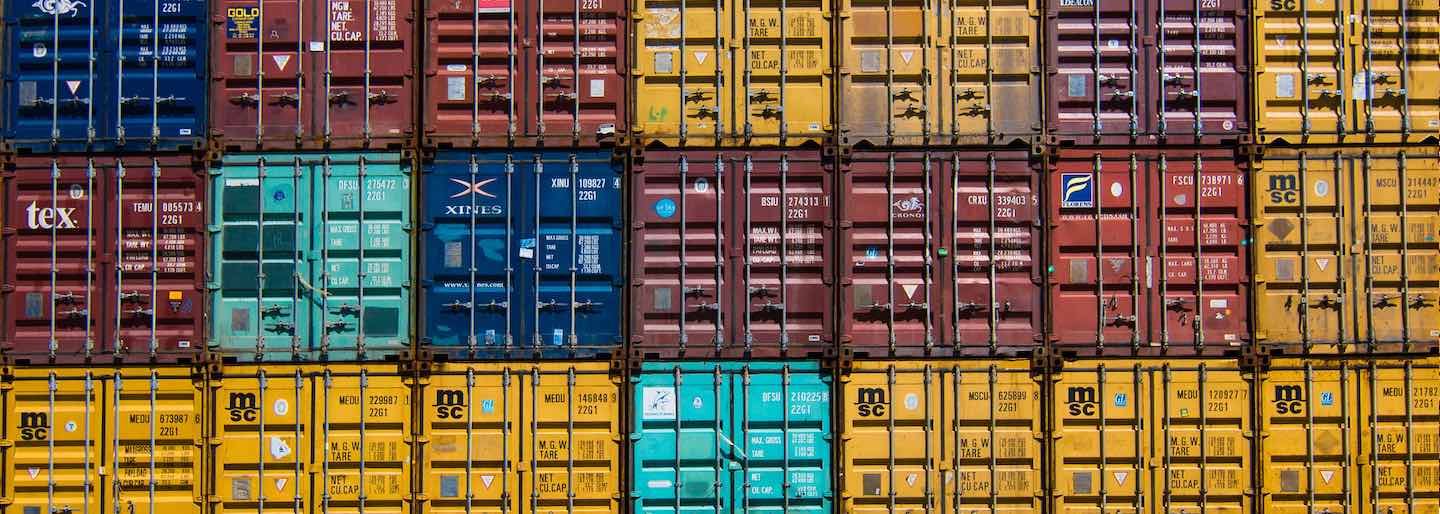Are you looking for international container shipping to transport your goods? Or maybe you are simply curious to learn the current container freight rates? Either way, you have come to the right place! Our online price calculator gives you instant quotes and lets you book container shipping directly online. All you have to do is select the service that suits your needs, and Transporteca will make sure everthing related to your FCL shipment is taken care of.
In the following article, we summarize everything you need to know about container shipping: The benefits of shipping your cargo with a container, what types of containers are available, and how container prices are calculated.
How much does container shipping cost?
At Transporteca, we collaborate with a large number of different providers of container shipping. And now you can get prices and schedules for FCL shipping with only a few keystrokes. Fill out the form below and get a non-binding quote directly on the screen.
The benefits of container shipping
There are many benefits to container shipping. The most significant relate to safety, transit time and price. We elaborate on the benefits of FCL below.
Safety
Container freight is generally considered to be a very safe mode of transport, as the container acts as a physical barrier and thus protects the goods from bad weather, temperature fluctuations, fire, theft and other impacts that can occur during handling and transport.
When your cargo is loaded into the container, the doors are closed with a container seal, which can only be opened with a bolt cutter. In this way, there is much greater assurance that the container will not be opened during transport – and in any case the seal can confirm whether or not the container has been opened during transit. We are thus dealing with a closed iron box that is placed horizontally and stably during transit, thus reducing the risk of damage, loss and theft.
Transit time – FCL versus LCL
Comparing the transit time for FCL (Full Container Load) and LCL (Less than Container Load) there may even be some time to save when booking a full container. This is because all containers containing LCL shipments must pass by the freight forwarder’s warehouse and be opened, emptied and sorted before the goods can be delivered to the respective consignees. Whereas, FCL shipments can be delivered directly to its rightful owner when it arrives at the port of destination.
Another reason why the transit time is longer for LCL compared to FCL is that when you send LCL shipments you share a container with other importers/exporters, and if, for some reason, their goods need to be checked or require any special handling it may cause your cargo to be delayed.
Whether you are shipping FCL or LCL, you can expect a transit time of 35-50 days for a transport from e.g. China. And if you compare the two, you can expect that the transit time for FCL is generally 3-5 days shorter than for LCL.
Container shipping rates
Due to the handling costs associated with LCL shipments (including ‘destination fees’), it is not a bad idea to look into the possibilities of shipping a full container if you are shipping rather large volumes. In fact, sending a full container may make sense even if you can’t fill it up completely. LCL shipments of about 15 cubic metres or more will often cost the same or more than a 20 foot container – even if container is only half full.
LCL is a great solution for smaller shipments. Here, you share a container with other shipments that are heading to the same destination, and in this way you can ‘split’ the costs with others. Unlike FCL, which usually has a flat rate per container, the price of LCL is based on volume (cubic metres). Therefore, LCL shipments are a cost effective solution for smaller shipments as you only have to pay for the space you occupy in the container. At the same time, it is almost always cheaper than air freight.
On the other hand, you will typically see that the rate is 2-3 times higher per cubic metre for LCL shipments than for FCL shipments. That’s due to (among other things) the many surcharges involved with LCL shipments: Port Service Charge, Terminal Handling Charge, Terminal Security Fee, Import Processing Fee, just to name a few. And with good reason – the workload is simply heavier for LCL: Several shipments have to be combined in one container, it requires more handling and more paperwork, and the container must be emptied and sorted in the port of arrival before the cargo can be repacked for delivery. Therefore, shipping 15 m3 LCL will often cost the same or more than a full 20 foot container.

Container shipping price examples
Below we have compiled a list of price examples of both LCL and FCL shipments from China to the UK to illustrate that it is worthwhile to look into the possibilities of shipping FCL when the size of your shipment reaches 15 m3:
15 m3 FOB Shanghai with delivery in London:
GBP 1.560
18 m3 FOB Shanghai with delivery in London:
GBP 1.831
20 foot container FOB Shanghai with delivery in London:
GBP 1.846
15 m3 EXW Shanghai with delivery in London:
GBP 2.321
20 foot container EXW Shanghai with delivery in London:
GBP 2.405
What container types are there?
Whatever you need to transport, it will almost always be possible to find a container type that matches your specific needs. There are many different types of containers. In particular, there are two types of containers that dominate the sea freight market: namely a 20 foot container and a 40 foot High Cube container. These two dry cargo containers make up over 80% of the world’s container fleet and will therefore often be the ones most relevant to you.
A 20 foot container is 20 feet long, equivalent to just over 6 metres, and has a capacity of 33 cubic metres. This corresponds to internal dimensions of L 5.90 m x B 2.35 m x H 2.39 m. In practice, however, you should not expect to be able to utilize more than 90% of the space, as it will be practically impossible to pack a container without any waste space. Instead, expect the container to hold between 25-30 cubic metres, depending on the type of goods and how they are packed. Eg. it can hold 11 Euro pallets. Furthermore, it is worth mentioning that a 20 foot container has a weight limit of 28 tons, which corresponds to approx. 1 ton per cubic meters. This makes the container particularly suitable for very heavy goods, such as metal, wood and paper.
A 40 foot High Cube container is – as the name implies – 40 feet long. This equates to just over 12 metres. This type of container is the most common and accounts for over half of the container fleet worldwide. The term ‘High Cube’ indicates that the container is 9.5 feet high (i.e., almost 3 m) and thus one foot taller than the 20 foot container and the ‘regular’ 40 foot container, both of which are 8.5 feet high. With these measurements, the High Cube container holds 76 cubic metres, but just like with the 20 foot container, you should not expect to be able to utilize all cubic metres. Depending on the type of goods you are transporting, you can expect a maximum loading capacity of around 68 cubic metres, or for example 23 Euro pallets. See all container dimensions and loading capacity information below.
20 foot container
Inside length: 5.89 m
Inside width: 2.33 m
Inside height: 2.38 m
Door width: 2.33 m
Door height: 2.28 m
Capacity: 33.2 m3 (28 m3 in practice)
Tara weight: 2.300 kg
Max cargo weight (excl. tara weight): 28.000 kg
40 foot container
Inside length: 12.01 m
Inside width: 2.33 m
Inside height: 2.38 m
Door width: 2.33 m
Door height: 2.28 m
Capacity: 67.7 m3 (58 m3 i praksis)
Tara weight: 3.750 kg
Max cargo weight (excl. tara weight): 26.700 kg
40-fods HQ container
Inside length: 12.01 m
Inside width: 2.33 m
Inside height: 2.69 m
Door width: 2.33 m
Door height: 2.56 m
Capacity: 76.4 m3 (68 m3 i praksis)
Tara weight: 3.940 kg
Max cargo weight (excl. tara weight): 28.560 kg
Other container types
For the slightly more unusual shipments, there are, of course, suitable container types for that too. Below we list some of the most commonly used:
Refrigerated containers (also referred to as a reefer container): This is used primarily to transport meat, fruits, vegetables and other types of foods and goods that require a frozen or simply refrigerated transport.
Tank containers: This is used to transport liquids, primarily chemicals.
Flat Rack containers: This type of container has no sides or roof and is therefore used for goods that are too wide or too tall to fit in a regular container. Eg. a ship anchor or bulldozer.
Open Top containers: This can be described as a roofless container. It is usually used for very long goods, which can thus advantageously be loaded through the roof of the container. This could be pipes or tree trunks.
Open Side containers: On this type of container, one of the sides will be replaced by a plastic curtain. This way it is possible to load the container from the side with a forklift.

What container type fits my need?
If you are unsure about which type of container suits your shipment, this rule of thumb for choosing a container can probably help you:
If your cargo takes up 30 cubic metres or more, you should choose a 40-foot HQ container.
If your cargo measures between 15 and 30 cubic metres, a 20-foot container will be suitable.
If your cargo is between 12-15 cubic metres, we recommend that you look into the options of both LCL and FCL. That way you are guaranteed the most advantageous solution for your ocean freight.
If your cargo is between 1-10 cubic metres, sending your cargo as LCL will probably be the best solution.
How are container shipping rates calculated?
Various factors make up the price of your container shipment. The price will, for example, depend on supply and demand, the specific type of container, the different elements of the shipping process as well as relevant surcharges. We will elaborate on how the rates for container shipping are calculated below.
Supply and demand
The price of shipping a container can vary a great deal. This is primarily due to the principle of supply and demand. The shipping lines determine the sea freight rates, and typically you will see that the rates increase at the beginning of the month, before decreasing as the need to sell out rises. The sea freight rates can fluctuate up to between USD 500-1.000 per month. When you search for prices on transporteca.co.uk, you can see these fluctuating prices month by month, where the rates are updated in accordance with the shipping lines’ prices.
Container type
Unlike LCL shipments (Less than Container Load), where the price is calculated on the basis of volume and weight, FCL prices are determined on the basis of the container type. More precisely, the cargo weight is not important and has no say in pricing as long as it does not exceed the maximum weight of 28 ton for a 20-foot container and 26 ton for a 40-foot HQ container. Instead, the price is solely determined by the type of container.
The elements of the transport process
To fully understand your transport costs, it is a good idea to divide the transport process into the various steps that together equal the total price of any overseas import or export shipment. Each step is often further subdivided: Some of the costs are directly related to the physical handling and transport of cargo, while other costs go to authorities or surcharges invoiced by the freight forwarder.
Below we list the 7 items that together make up the total price for overseas container transport:
- Pickup at shipper’s address
- Local handling costs at origin, including handling of the container from the port until it is loaded onto the ship.
- Customs clearance at origin
- The actual sea freight
- Customs clearance at destination
- Local handling costs at destination. More specifically, handling of the container from the port until it is placed on the truck for delivery
- Delivery at consignee’s address
As mentioned, each part of the transport process constitutes a separate cost, and the total cost (total landed cost) is thus found by putting each element together. In order to accomodate unexpected costs, it is important that the shipper and the consignee agree on who is responsible for the costs involved. In practice, this is done by agreeing on a specific set of trading terms (Incoterms), as these indicate exactly when responsibility and costs pass from the seller to the buyer. This should be agreed early in the process and before booking the transport.

For more details, you can read our article on the 7 steps in the shipping process. Here, you get the big overview of what is included in the transport price you pay and what costs must be settled later on.
A sea of surcharges
Last but not least, the price of container shipping is also affected by various surcharges. Below we list some of the most commonly used:
- Congestion: When a specific port is exposed to heavy traffic
- War risk surcharge
- Peak season surcharge
- BAF (Bunker Adjustment Factor): price adjustment based on fuel prices
- CAF: Currency Adjustment Factor: price adjustment based on currency fluctuations
- CFS fee: Container freight station fee – handling of the shipment in the warehouse (LCL only)
- Fuel: Covering temporary high fuel costs for trucks
- Security: Temporarily increased security costs, e.g. extra guards or insurance premium
- Environmental surcharges: Typically decided by the authorities
In addition to the above, there are an abundance of other surcharges that both shipping companies and freight forwarders use frequently. As a new importer, it can be difficult to figure out all the different surcharges and what they cover. We have tried to eliminate that with Transporteca. We have taken all surcharges into account when we calculate your transport quote, to always provide full transparency.
Book container shipping with Transporteca
If you are shipping large volumes, we recommend that you look into the possibilities of FCL transport as you might be able to benefit from economies of scale. However, if your shipment is relatively small, you should stick to LCL. The general assumption is that you should always choose FCL when your shipment is 15 m3 or more.
When you book container shipping with Transporteca, you always get an all-in price. Don’t worry about the surcharges and unexpected extra fees – all costs are included in your offer. You can even search for prices and book your container shipping directly on the portal. Simply specify the cities of collection and delivery, the container type and weight, and you will get your price directly on the screen.
In case we do not have the container prices you are looking for available online, we will return with a quote as soon as possible. If you have any questions about your upcoming transport or container shipping in general, you are always welcome to contact us at [email protected]. We look forward to hearing from you.